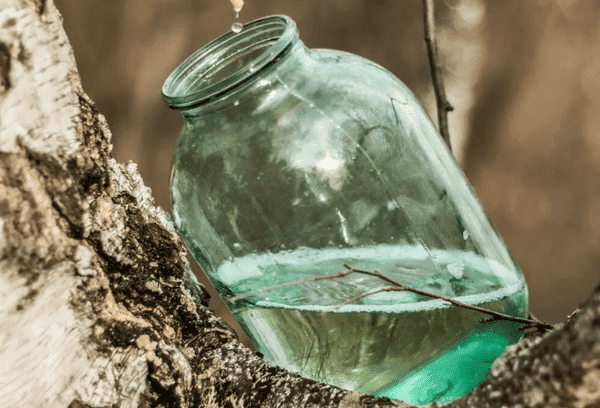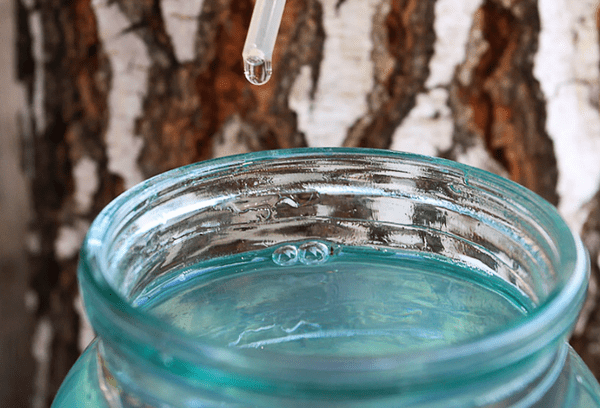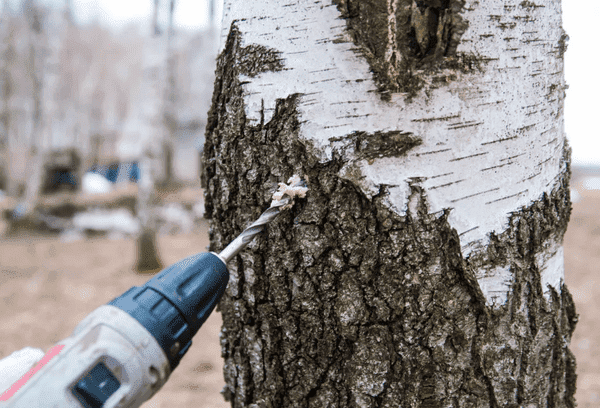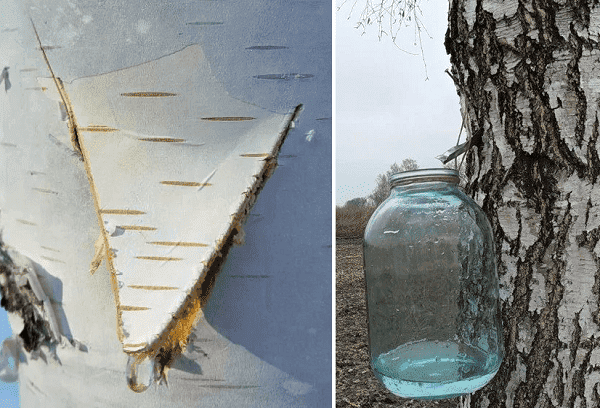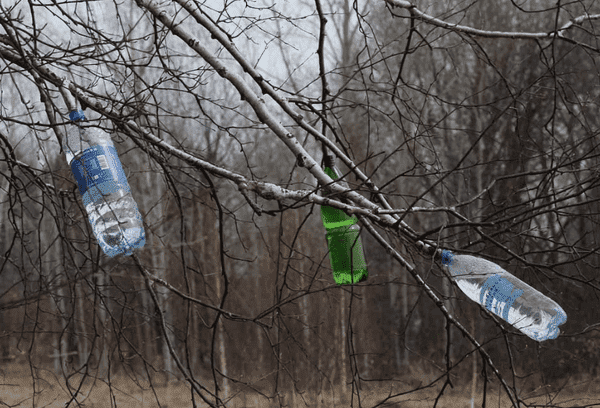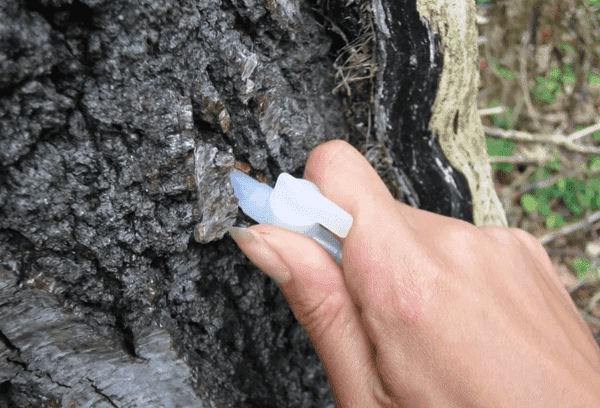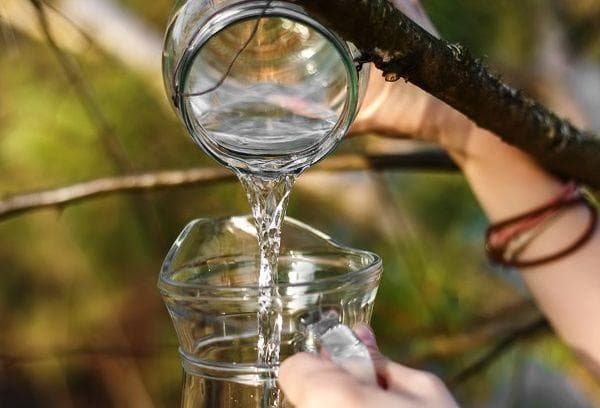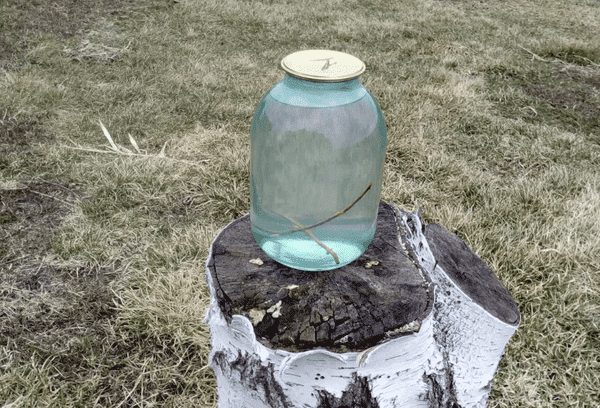When can you collect birch sap in spring 2021?
Content:
Having learned about when birch sap is collected, everyone will be able to improve their body health without paying a penny. The benefits of this product have been known for a long time. Natural birch sap contains enzymes, biologically active and tannin substances, and glucose in an easily digestible form. In order for the concentration of useful substances to be maximum, the collection must be organized within a certain time frame. Juice taken at the wrong time will not be as valuable.
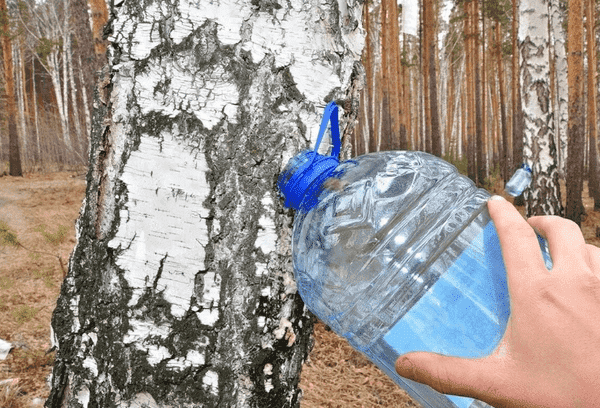
Properties and composition of birch sap
In appearance, birch sap is a colorless or slightly yellowish liquid. Essentially, this is water driven under pressure by the roots along the tree trunk in order to provide nutrition to the awakening buds and ensure the formation of leaves. Vitamins and minerals are dissolved in the liquid in varying concentrations. Natural sweet syrup is extracted from the layer of wood located under the bark of the tree.
The composition of the sap varies depending on where the birch grows. Some samples may contain more zinc, while others may contain more magnesium or copper. If you plan to prepare a product for storage, it is better to collect it in different places and then mix it.When the juice just begins to flow, it is more transparent. By the end of the harvesting season, the liquid becomes slightly cloudy.
In what month is birch sap collected?
The timing of collecting the natural elixir depends on the region. In central Russia, birch sap is collected in early spring, when its movement is most active. The process of sap flow continues until the leaves form, then its intensity decreases.
Collection dates by region:
- in the conditions of the Moscow region, collection is carried out from the end of March to the beginning of April;
- in the south of Russia, the dates are shifted a month earlier (late February - early March);
- in the Leningrad region and the southern Urals, harvesting begins in mid-April;
- The climate of the northern Urals and Siberia allows you to start the procedure in the second half of May.
However, spring can be either early or late. You need to go into the forest with a bucket when the temperature outside remains at +5-8° C for several days. This year, spring corresponds to the climate norm, which means that residents of the Central region can already get ready to harvest.
It is worth paying attention to how the birch branches look. The places where buds are about to form become noticeable on them. Even in the same region, birch sap begins to circulate at different times:
- trees growing on southern slopes begin to awaken earlier;
- birch trees located in an open area or near a building also give sap earlier;
- severe frosts followed by a thaw provoke accelerated and intense sap flow.
In a dense forest, you can take your time collecting sap; here they begin harvesting 5-6 days later compared to open areas. Old trees produce more sweetish liquid compared to young trees.You can more accurately determine the right moment for harvesting by the appearance of the branch cut with a knife. Juice should be released from the cut. If the inner tissue remains dry, collection should be delayed for a few more days.
General collection rules
Some people may be confused by the snow cover in the forest. However, you need to focus not on the lying snow, but on the onset of above-zero temperatures. The first drops of juice are the most valuable, so it is better to try to organize collection in the first days of sap flow.
In this case, you need to adhere to certain rules:
- The product is extracted only in environmentally friendly places (forest, natural area remote from industrial enterprises). Collecting birch sap in the city and near busy roads is dangerous; heavy metals can accumulate in it.
- It is recommended to make an incision on the south side of the trunk, where sap flow is more active due to heating by the sun.
- Favorable hours for collecting liquid are from 11:00 to 18:00.
- It is better to go for harvesting in sunny weather.
After the appearance of leaf primordia, the amount of juice decreases sharply, and its extraction becomes impractical. The properties of the vitamin drink also change; it becomes viscous, dark, and acquires a bitter taste. To avoid a fine, you should not collect juice in city parks, botanical gardens, protected areas, forest plantations belonging to medical and educational institutions, or on private territories.
Extraction methods
The sap is taken from trees whose trunk thickness exceeds 25 cm. Young birch trees are of little use in this regard. The diameter of the hole should not exceed 1 cm, then the tree will definitely not be harmed.
Drilling the barrel
You can get a large amount of juice in a short time using a drilled hole.The most convenient way to drill through the bark is with a drill. If you don’t have a tool, you can poke a hole with a large nail, skewer or awl. On one birch tree, make no more than 4 holes up to 3 cm deep, placing them at intervals of 15 cm.
You can drill deeper into the wood, but in this case the wound will take a long time to heal. An infection can get inside the tree. As a result, the birch tree will be affected by fungus. A metal groove or a plastic tube is inserted into the hole made.
The flowing juice is collected in a substitute container. You can get up to 1.5 liters of juice from one wound per day. It is convenient to collect liquid by hanging plastic bottles. If there are several holes, it is better to place a bucket on the ground where the juice will flow through thin hoses. At the end of the collection, a knot of suitable diameter is hammered into the hole.
Cut in the bark
The depth of the cut depends on the age of the tree. Older specimens have thick bark. You will have to go deeper by 0.5-2 cm. The goal is to get into the conductive layer of tissue (bast). It is better to make the cut at an angle. An even more convenient option is to open the bark on an inclined section of the trunk. From such holes the juice flows faster, falling directly into the substituted vessel.
You can make an incision in the depression, where the bark is usually thinner. Superficial wounds on the tree heal quickly. A shallow incision can heal completely in 3-4 days. For the tree, such a procedure will not be too traumatic.
Using a branch
An even more gentle method involves collecting sap along the branch. First, one of the lower knots is selected and cut off, leaving a stump 5-6 mm long. Almost instantly, healing liquid will begin to flow from it into the substituted container. The container can be secured to a tree using a slingshot so as not to hold it in your hands.
If the juice is collected in a cup or bottle with the neck cut off, the same container can easily contain ants and other insects, for which the sweet drink becomes bait. It’s better not to leave the drive unattended and shake off the bugs while still “on the approach.”
Collection devices
To collect birch sap, you can use a variety of devices made of wood, metal, and plastic. For example:
- Curved plastic straws for cocktails are very convenient. They play the role of a kind of faucet. The diameter of such tubes fully allows their use. There is no need to make a very large hole under them, at the same time, the product has a suitable throughput capacity, the juice flows quite quickly.
- When collecting birch liquid from several holes, it is convenient to use medical droppers. By the way, in this case you can do without serious damage to the bark. It is simply pierced with a wide needle. The second end of the dropper is lowered into a bottle or other container.
- The use of grooves made of hardwood or metal speeds up collection. Their length can be adjusted as desired. The groove is driven into the hole with a slight slope. A small bucket is placed on the ground next to the tree, where the liquid will drain.
- Our ancestors collected birch sap using grass flagella. This method is suitable for those who find themselves in the forest without the proper equipment and suddenly decide to try a healing drink. It will be enough to slightly pick out the bark and insert into it a braid woven from blades of grass. The second end of the flagellum is lowered into the container you have with you.
As a last resort, you can simply peel back the bark. Almost immediately juice will flow through it.Having collected the required amount of liquid, the bark is put in place and fixed with clay or damp earth. The birch tree can handle very minor damage on its own.
Shelf life of fresh birch sap
Fresh birch sap contains a certain percentage of sugar, so it is not stored for a long time. Having brought it home, you need to strain it and put it in the refrigerator, where the drink will retain its properties for 4 days. After this period, the juice can deteriorate, even in the cold.
Signs of spoilage include cloudiness of the liquid. Sometimes the juice remains clear, but tastes too sour, which indicates the beginning of the fermentation process and the formation of acetic acid. Of course, you should not drink a drink if mold appears on its surface. Glass or plastic bottles are used as containers for storing fresh juice.
How to drink a healthy drink correctly
The most beneficial is the juice collected within the next 2 hours; later it gradually loses its wonderful properties. The drink should be drunk chilled. Depending on the place of collection, the juice may have a specific taste, in which case honey or a squeeze of fresh berries is added to it.
In order to benefit the body, the drink is consumed daily for 2-3 weeks. This should be done three times a day, drinking 1/4 glass. During this period, it is advisable to limit the consumption of strong drinks (tea, coffee) and alcohol. You can combine birch liquid by mixing it with citrus juice or using it as a component for making cocktails with fruit pulp.
Adherents of proper nutrition pour oatmeal with birch liquid, obtaining a healthy and satisfying porridge.You can diversify its taste by adding honey, nuts, and sunflower seeds.
Procurement for future use
If you manage to collect a lot of juice, you can save it in order to use the product during the summer or fall. It is better to start harvesting immediately after collection. The simplest method involves heating the juice to a temperature of 80° C and further pasteurization in sterilized jars at 90° C. The duration of heat treatment is 15-20 minutes.
Canned juice can be stored for up to 8 months. For those who have a large freezer, the freezing method is suitable. Freeze the juice in shock mode (very quickly). It is advisable to immediately divide the product into small portions for one-time use.
For medicinal purposes, you can make an alcohol tincture of birch sap. The natural product is mixed in equal parts with vodka, poured into glass bottles and stored in a dark and cool place. The tincture will be ready in 7 days. Use it by adding 1-2 tbsp. spoons per glass of water. The product has a tonic effect and strengthens the immune system.
Do not miss the opportunity provided by nature to heal your body in a simple and natural way. Collecting birch sap can become a useful annual habit. At the same time, it is important to take care not only of yourself, but also of the tree. If the damage to the bark was significant, it must be repaired.
